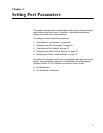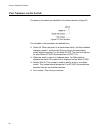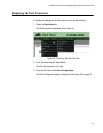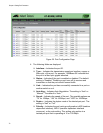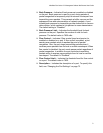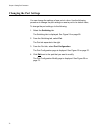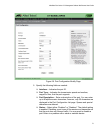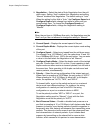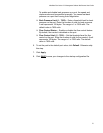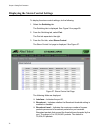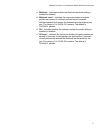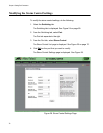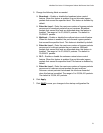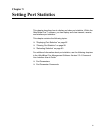
Chapter 4: Setting Port Parameters
74
Negotiation— Select the state of Auto Negotiation from the pull-
down menu. Setting “Auto” enables Auto Negotiation and setting
“Manual” disables Auto Negotiation. The default setting is “Auto.”
When the setting for this field is “Auto,” the Configure Speed and
Configure Duplex fields change from white to brown and you
cannot select them. To change the Configure Speed and
Configure Duplex fields, change the Negotiation setting to
“Manual.”
Note
When the port type is 1000Base fiber optic, the Negotiation must be
“Auto” and you are not allowed to change the setting to “Manual.”
Current Speed— Displays the current speed of the port.
Current Duplex Mode— Displays the current duplex mode setting
of the port.
Configure Speed— Select a port speed from the pull-down menu.
For example, for a 10/100Base-T port, the options are 10 and 100.
For a 1000Base-SX/LX port, 1000 is the only option. You can enter
a value in this field when the Negotiation is set “Manual.”
Configure Duplex Mode— Select the duplex mode of the twisted
pair port. Choose from Half, Full, or Auto. A port operating in half-
duplex mode can either receive or transmit packets, but not both at
the same time. Ports operating in full-duplex can both send and
receive packets, simultaneously.
Polarity— Select the wiring configuration of the twisted pair port.
When a port is operating at 1000 Mbps, the only option is “AUTO.”
When operating at 10 or 100 Mbps, in either half- or full-duplex
mode, the options are “AUTO,” “MDI,” and “MDI-X.”
To forward traffic, a port on the switch and a port on a network
device must have different settings. For instance, the wiring
configuration of a switch port has to be MDI if the wiring
configuration on a port on a network device is MDIX.
To set the polarity to either “MDI” or “MDI-X” on a port, the
Negotiation setting must be “Manual.” A port with the Auto-
Negotiation must set the polarity to “AUTO.”
Back Pressure Status— Enable or disable back pressure on a
port that is operating at 10 or 100 Mbps in half-duplex mode. Back
pressure is used by a port during periods of packet congestion to
temporarily stop their network counterparts from transmitting more
packets. This prevents a buffer overrun and the subsequent loss
and retransmission of network packets. A port initiates back
pressure by transmitting on the shared link to cause a data
collision, which causes its link partner to cease transmission.




